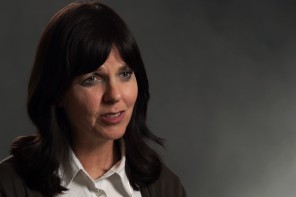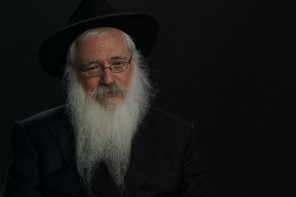Jewish theological works address the religious underpinnings and scriptural support for the notion of divine reward and punishment in the afterlife.[1]
Rabbinic literature is also well known for its unapologetic posture in describing various forms of divine retribution meted out in the afterlife for those deemed deserving of it.[2]
What are we to make of these depictions?
In one enigmatic text,[3] King David is exhorted to refrain from putting a particular individual to death:
And a man has arisen to pursue you and to seek your soul. But my lord’s soul shall be bound in the bundle of life with the Lord your God, while the soul of your enemies, the Lord will sling it with the hollow of the sling.
The verse here teaches, says the Talmud,[4] that evildoers are subject to a form of punishment that is akin to being flung violently with a slingshot from one end of the world to the other.[5]
This is but one example of a series of perplexing forms of punishment in the afterlife. In the following lines, we will attempt to gain some understanding of what this “slingshot” is all about.
Purge with a Purpose
It is important to preface these remarks by saying that according to the Masters of Kabbalah, the experiences of the soul in purgatory are intended to purify the soul, so that it can acclimate itself to its spiritual surroundings and truly benefit from the afterlife.[6] Gehinom is compared to a sponge that absorbs any negativity that became associated with the soul during one’s lifetime.[7] Although a painful process, it is not intended to settle a score, but rather to cleanse and elevate the individual so he or she is prepared for the experiences of the next phase of their spiritual lives.
In what way can a “slingshot” help in this process, and how does it actually work?
Rabbi Yosef Albo (1380-1444) provides a fascinating insight into the nature of the punishment in the afterlife in general, and particularly regarding the concept of the kaf ha-kela (slingshot).
For the soul to gain an appreciation of the divine in the afterlife, it is necessary for it to have cultivated an understanding and connection with divinity during its mortal existence.[8] Yet even having done so, if the soul allowed itself to be drawn towards the mundane and sensual things in life (for their own sake) during its physical lifetime, the soul becomes conditioned to appreciate and seek these out as well. Thus, the spiritually oriented person now experiences a form of spiritual “congestion” (timtum ha-lev ve’ha-moach) where the heart and mind are encumbered by dual loyalties to both the G-dly and the mundane.
As a result, when the soul arrives in the hereafter, its experience is a dichotomous one. On the one hand, it retains its desire for physical delights,[9] but can now no longer achieve them; and almost simultaneously, the soul beholds the sheer power of the Almighty and senses the nullity of all of existence before G-d; it wishes to deepen its understanding of, and connection to, the divine, and these polar opposites tug at the soul and give it no rest. It feels as though it is being slung from one extreme to the other, seeking at one moment the pleasures of the life it has left behind, and at another, the sublimity of G-dliness. Seeing that it can achieve neither, the soul is deeply pained, and it is this experience that is referred to as “being in a slingshot.”[10]
To further explain the pain experienced by the soul, Rabbi Albo draws our attention to the mechanism of physical pain. When an incision is made on the human body, for example, or when parts of the body are burned, what is the pain a reaction to?
As a rule, the human animating soul naturally seeks a wholesome environment to reside in. It needs a healthy, functioning body in order to feel safe and secure. It recognizes that this can only happen when all of its countless parts remain bound together and are not fractured and disjointed. Knowing that its physical survival hinges on the body retaining its wholesomeness, the soul is pained when a part of the body becomes detached, because its space has been breached and it fears that it may be forced to expire entirely.
In a more profound way, the soul experiences excruciating pain when it enters the afterlife, and it can neither achieve the spirituality it thirsts for, nor can it attain the pleasures of the material world. The soul feels as though its very fabric is being torn apart, because it is being pulled in two different directions.[11]
There is an even more intense form of this experience. The Midrash of Rebi Eliezer[12] uses the metaphor of one’s being catapulted out of the Land of Israel and into the Diaspora. This means that one experiences a desire to fulfill the divine will (alluded to by the term “Land of Israel”—ארץ ישראל—the land that wishes to fulfill the will—רצון—of the Almighty), and then reverts to an intense appetite for (permissible) physical delights (alluded to by the term “Diaspora”).[13] An even more fierce form of this is driving the soul to seek both extremes of limitation and expanse at the very same time.[14]
The effect this has on the soul is similar to that of one subjected to harsh traveling conditions, leaving the individual weary and disoriented. The person sheds all of his previous notions of pleasure and is then in the position to appreciate a new reality.[15]
Preparing for Tomorrow
What can one do today in the temporal realm to prepare their soul for better acclimation in the World to Come?
The essential response to this question was dealt with in Lesson One of Journey of the Soul. When we align our lives with eternal values; when our actions are driven by principles that flow from eternal truths, we immortalize those parts of our persona that we have vested in those actions.
However, beyond this powerful paradigm shift, the Masters of Chasidut teach that one can remedy the (spiritual) “congestion” of the heart and mind that require the soul to undergo the Kaf Ha-Kela (the slingshot) by the following three items (ideally before the morning prayers).
- Giving charity
- Ritual immersion in a mikveh
- Studying teachings of the Kabbalah that arouse a pure expression of faith in G-d
The rationale behind this is that action (as opposed to verbal expression of words of Torah or even meditation) has a unique and remarkable quality that can inspire change. Although the mental and verbal capacities of the person more openly manifest the nature of the individual—and they would seem to promise the most direct path to internal change—action, however, is in truth most effective in creating change. The act of giving charity also encompasses the spirit behind all of the practical mitzvot, and is therefore highly efficient in achieving personal change.[16]
Taken together, these three items help set the person on a path that changes one’s perception of reality and the purpose of life. One becomes more attuned to the needs of others and focused on the greater good (charity). One recognizes that growing spiritually can require us to embrace new notions of accomplishment and move the goalposts to places we would have never thought possible (mikveh). We are then in the position to think deeply about ourselves and discover the wellsprings of faith that lie latent within us and begin our journey in connecting with the Almighty through prayer (study).
[1] See R. Sa’adya Gaon, Emunos Ve-De’os, 9; Maimonides, HilchosTeshuvah 8:1; Nachmanides, Toras Ha-Adam (Sha’ar Ha-Gemul); Reshis Chochmah, Sha’ar Ha-Yir’ah 12:13.
[2] See Maseches Gehinom, featured in Beraisa di-Shmuel Ha-Katan (piotrkow, 1902), p. 73.
[3] Shmuel I, 25:29.
[4] See Talmud, Shabbos 152b. Midrash Lekach Tov, Koheles, 3:21.
[5] See also Metzudas David, Shmuel, ibid.
[6] This is obvious from the Zohar, vol. I, 217b.
[7] Emek Ha-Melech, Sha’ar Tikunei Ha-Teshuvah, 1.
[8] See also our previous article, The Anatomy of the Soul, where the views of both Rambam and the Kabbalists are explored. The point made by R. Albo is nonetheless compatible with both.
[9] See Ma’amarei Admur Ha-Emtza’i, Bamidbar, vol. v, p. 1628 for an explanation of how the soul can yet retain desires for the mundane upon its arrival in the World to Come.
[10] Sefer Ha-Ikarim, 4:33.
[11] Ibid.
[12] Pirkei di-Rebi Eliezer, ch. 34.
[13] See Rabbi Menachem M. Schneerson, Toras Menachem, vol. xvi, p. 247.
[14] Ibid.
[15] See Ma’amarei Admur Ha-Emtza’i, ibid., p. 1627.
[16] Toras Menachem, ibid. p. 248.





